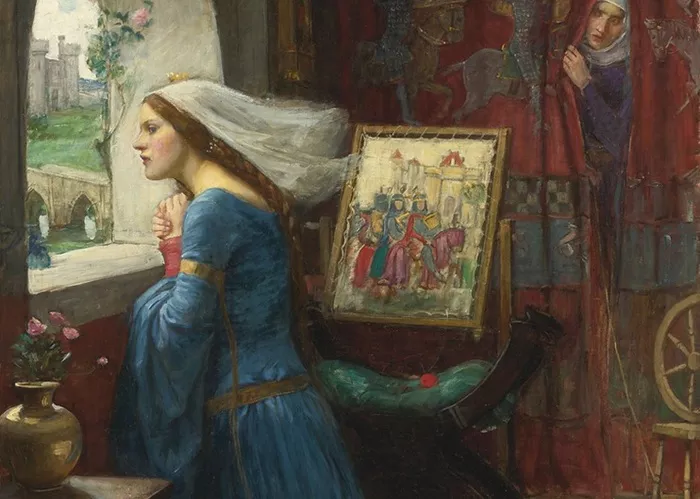Welcome to Poem of the Day – Rapunzel by Anne Sexton
Anne Sexton, an acclaimed poet known for her confessional style, brings a fresh perspective to classic fairy tales in her poem Rapunzel. Written in 1971 as part of her collection Transformations, Sexton retells the well-known fairy tale of Rapunzel, but with her signature dark and introspective approach. In this article, we will explore the themes, symbolism, and narrative techniques used by Sexton in Rapunzel to create a thought-provoking and contemporary interpretation of the classic story.
Rapunzel Explanation
Overview of the Poem
Rapunzel is based on the German fairy tale of the same name, which was made famous by the Brothers Grimm. The story centers on a young woman, Rapunzel, who is imprisoned in a tower by a wicked sorceress. She is known for her long, golden hair, which the sorceress uses to climb up and visit her. In the poem, Sexton takes the elements of the fairy tale and transforms them into a modern allegory.
The poem is written in free verse, a characteristic style of Sexton’s poetry, allowing her to experiment with the structure and tone. The narrative is told from Rapunzel’s perspective, giving her a voice in a world where she was previously a passive figure.
Themes in Rapunzel
Freedom and Confinement
A central theme in Sexton’s Rapunzel is the tension between freedom and confinement. The poem opens with the image of Rapunzel’s imprisonment, not just in the tower but also in her own identity. The tower symbolizes the physical and emotional isolation that Rapunzel faces. However, unlike the traditional tale, where Rapunzel passively waits for rescue, Sexton’s Rapunzel is more assertive and complex. She is both trapped and yet complicit in her imprisonment, showing a psychological struggle between her desire for freedom and her fear of the outside world.
Transformation and Self-Discovery
Sexton’s retelling focuses on Rapunzel’s transformation. The poem highlights her shift from a passive character into someone who actively seeks to understand her identity. Rapunzel’s hair, an iconic symbol in the fairy tale, becomes a metaphor for her connection to the world. In the poem, her hair is described as something that represents both her beauty and her entrapment. It is only through the act of cutting her hair—symbolizing a break from the past—that Rapunzel is able to begin her journey of self-discovery and independence.
Gender and Power
Sexton often explores the theme of gender and power dynamics, and Rapunzel is no exception. The poem examines the way women are portrayed as passive or dependent figures in traditional fairy tales. Rapunzel’s relationship with the sorceress in the original story can be seen as a metaphor for the control that women often face in society. However, in Sexton’s version, Rapunzel challenges this dynamic by taking ownership of her fate, subverting the passive role typically assigned to her.
Symbolism in Rapunzel
The Tower
In Rapunzel, the tower symbolizes more than just a place of physical confinement. It also represents mental and emotional isolation. For Sexton’s Rapunzel, the tower is a place of both safety and limitation. While it provides protection from the outside world, it also prevents growth and self-realization. Rapunzel’s desire to escape is not just about physical freedom, but also the need to break free from her own self-imposed restrictions.
The Hair
Rapunzel’s hair is perhaps the most significant symbol in the poem. It represents both her connection to the outside world and her entrapment within her own circumstances. Traditionally, the hair is a symbol of beauty and femininity, but in Sexton’s poem, it becomes a source of power and weakness. Her hair is the means by which the sorceress controls her, but it is also the means by which Rapunzel can find her own way out of the tower. The act of cutting her hair becomes a symbol of Rapunzel’s liberation, signifying her break from both the sorceress and the traditional fairy tale role.
The Prince
In the original fairy tale, the prince is the hero who rescues Rapunzel from her tower. In Sexton’s retelling, the prince is more of a passive figure. He does not “save” Rapunzel; rather, it is her own act of self-liberation that brings about change. The prince’s role in the poem highlights the theme of dependency in romantic relationships. Rapunzel does not need to be rescued; she has the power to free herself.
Narrative Techniques in Rapunzel
First-Person Point of View
Sexton uses a first-person narrative in Rapunzel, allowing the reader to experience the story from Rapunzel’s perspective. This approach brings an intimate understanding of her thoughts, emotions, and desires. By giving Rapunzel a voice, Sexton empowers the character and allows the reader to connect with her on a deeper level. This shift from the passive to the active in Rapunzel’s voice is a powerful tool for conveying the theme of self-empowerment.
Imagery and Language
Sexton’s use of vivid imagery and language brings the poem to life. Her descriptions of Rapunzel’s hair—its “long golden tresses” and its “glistening” quality—conjure an image of beauty, but they are also tinged with a sense of confinement. The contrast between light and dark, freedom and imprisonment, is a recurring motif in the poem. The imagery of Rapunzel’s hair being cut and falling to the ground is a powerful moment of change, symbolizing her emotional and psychological release.
Conclusion
Anne Sexton’s Rapunzel offers a modern, feminist reimagining of the classic fairy tale. Through her use of vivid imagery, symbolism, and themes of freedom, confinement, and self-discovery, Sexton transforms Rapunzel from a passive damsel in distress into an empowered and self-aware individual. The poem challenges traditional gender roles and expectations, urging the reader to reconsider the notion of rescue and the true meaning of liberation. Sexton’s Rapunzel is a powerful exploration of personal growth, transformation, and the complexities of identity, making it a timeless piece of literature.

